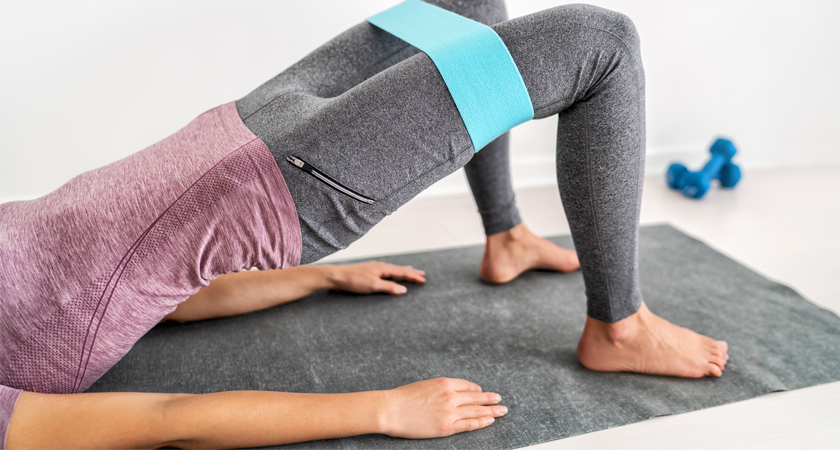The Importance of Core Strength for Spinal Support: How a Strong Core Protects Your Back and Posture
October 24, 2025
Back in the 1990s, “core training” became a hot topic. It was the most popular exercise fad of the era, but unlike other “health” fads like fat free snack cakes and the Thighmaster, this one had real benefits – and has stood the test of time. Core training focused on strengthening the muscles around the midsection to improve stability and prevent back pain. Today, we recognize that a strong core does far more than help you look good in your jeans. Here’s why.
Understanding the Importance of Core Strength for Spinal Support
When most people hear “core,” they immediately think of sculpted abs or crunches at the gym. But your core is much more than that—it’s the foundation of your body’s strength, balance, and posture. In fact, your core plays a crucial role in spinal support and overall health. Let’s explore why the importance of core strength for spinal support goes far beyond appearance, and how strengthening your core can help reduce pain, improve stability, and prevent injury.
What Is Your Core, Really?
Your core muscles of the body form a group of interconnected muscles that stabilize and move your spine, pelvis, and hips. Think of your core as a natural “corset” for your spine—it provides structure and support during every movement, whether you’re sitting at a desk or lifting groceries.
Here’s a quick look at the main core muscle groups:
| Core Muscle Group | Function |
| Transverse abdominis | Deep abdominal muscle that stabilizes the spine and pelvis before movement. |
| Multifidus | Small muscles along the spine that help with posture and spinal alignment. |
| Rectus abdominis | The “six-pack” muscle that flexes the spine forward. |
| Internal and external obliques | Allow trunk rotation and side bending; help stabilize the spine. |
| Pelvic floor muscles | Support the organs and contribute to spinal and pelvic stability. |
| Diaphragm | Works with the core to maintain pressure and stability when you breathe. |
| Hip flexors and glutes | Link the lower body to the spine, controlling pelvic alignment and mobility. |
So, when you train your “core,” it’s not just about doing sit-ups. It’s about creating a balanced, strong foundation that keeps your spine supported and aligned.
How Core Strength and Back Pain Are Connected
The weak core and back pain connection are well-documented in research. A strong core stabilizes the spine and absorbs stress during movement. When those muscles are weak or imbalanced, your back and surrounding joints are forced to compensate—leading to strain and discomfort.
A 2016 study published in the Journal of Physical Therapy Science found that core stabilization exercises significantly reduced chronic low back pain and improved function compared to general exercise. A Systematic Review of Core Stability Exercises in Patients with Non-Specific Low Back Pain (Smrcina, Woelfel, Burcal published in the International Journal of Sports Physical Therapy, 2022 showed that core-focused training helped improve spinal stability and decreased recurrence of back pain episodes.
In short:
A weak core = less spinal support → increased strain and pain.
A strong core = more spinal support → reduced pain and injury risk.
The Benefits of a Strong Core for the Spine
Developing core strength benefits your spine in multiple ways:
- Improved Posture: Strong core muscles help you stand taller and maintain natural spinal alignment.
- Reduced Back Pain: Core strength reduces stress on spinal discs, joints, and ligaments.
- Better Balance and Coordination: A stable core improves movement efficiency and prevents falls or awkward motions.
- Enhanced Performance: From walking to lifting, a stable spine improves power and endurance.
- Injury Prevention: Strong supporting muscles help protect your spine from strains and overuse injuries.
This is why many chiropractors emphasize chiropractic care and core strength together—because improving spinal alignment and core stability go hand in hand for long-term wellness.

How Core Strength Supports Posture
Poor posture often stems from muscular imbalance. Weak abdominal and back muscles cause slouching or exaggerated spinal curves, leading to discomfort or chronic pain. Strengthening your core restores balance between the front (abdominals) and back (extensors) of your body, allowing your spine to remain upright with less effort.
Try these simple spinal stability exercises at home:
Pelvic Tilts – Strengthen deep core muscles and improve lower back mobility.
Glute Bridges – Strengthen the glutes and hips to support pelvic alignment.
Planks (and Side Planks) – Engage multiple core muscles to protect the spine.
These core exercises for lower back pain are gentle, effective, and can be done with little to no equipment.
Core Strength, Chiropractic Care, and Long-Term Spinal Health
Many people who visit chiropractors for back pain or posture correction also receive guidance on core strengthening. That’s because chiropractic adjustments can realign the spine, while core training keeps it stable and supported afterward.
Think of it like this:
Chiropractic care restores alignment. Core strength maintains it.
Together, they create a synergistic effect—helping your spine move efficiently, stay balanced, and resist injury over time.
FAQ: Core Strength and Spinal Health
Q: Do I need to go to the gym to strengthen my core?
Not at all! You can strengthen your core with bodyweight exercises, resistance bands, or even yoga and Pilates. The key is consistency and proper form.
Q: How often should I train my core?
Aim for 2–3 times a week. Your core muscles need recovery time just like any other muscle group.
Q: Can I strengthen my core if I already have back pain?
Yes—but start gently. Choose low-impact movements like pelvic tilts, bird dogs, or bridges. Always consult with your chiropractor or physical therapist before beginning any exercise routine.
Q: Is core strength the same as flexibility?
Not quite. Core strength focuses on stability, while flexibility is about range of motion. Both are important for spinal health and posture.
Q: Can a strong core really prevent back pain?
Absolutely. Research consistently shows that strong, well-coordinated core muscles reduce the risk of both acute and chronic back pain by providing better spinal support and alignment.
Building core strength isn’t about chasing six-pack abs—it’s about supporting your spine, improving posture, and protecting your long-term health. By understanding what your core is and how it supports every movement, you can take simple, consistent steps to keep your spine strong and resilient for life.
Whether you’re managing discomfort or aiming for better wellness, remember: a strong core means a strong spine—and a strong you.
